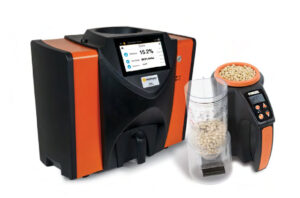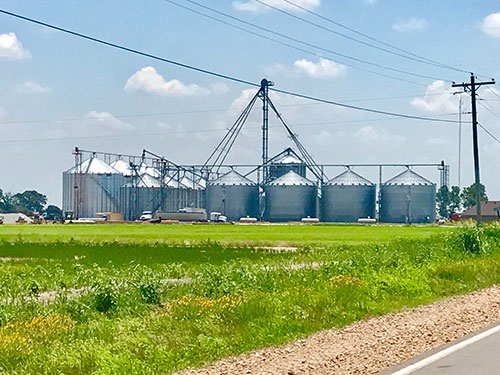When markets fluctuate, having flexibility in your grain marketing strategy can mean the difference between profit and loss. At Valley View Agri‑Systems, we understand that adding or expanding grain storage capacity—and integrating proper grain conditioning—is a key investment for forward‑thinking producers. We’ll explore the critical factors you should consider and demonstrate how smart storage investments can boost your bottom line by enabling you to sell grain later at a better price.
Why Invest in Grain Storage?
- Market Timing: Grain prices can swing significantly throughout the year. On‑farm storage lets you hold inventory beyond harvest, waiting for stronger demand or supply‑driven price rallies.
- Quality Control: Immediate drying, aeration, and conditioning preserve grain quality, preventing spoilage and dockage that can negatively impact your sale price.
- Logistical Flexibility: With on‑farm bins or silos, you can avoid peak‑season bottlenecks at commercial elevators and have more options for transporting or blending grain.
Key Factors in the Decision:
Storage Capacity and Expansion Costs
-
- Bin Size & Number: Determine the tonnage you expect to handle each season. Are you topping up existing bins, or constructing new ones?
- Construction vs. Modular Options: Steel grain bins require site prep and cranes, while flat‑bottom or hopper‑bottom modular systems can be quicker to install.
- Site Selection: Proximity to fields and access roads reduces hauling time. Ensure good drainage and a stable foundation.
-
- Dryers & Aeration: Efficient dryers paired with aeration fans help you hit target moisture levels quickly, minimizing risk of spoilage.
- Temperature Monitoring: Automated monitoring systems detect hotspots, allowing for timely aeration adjustments.
- Cleaning & Handling: Pre‑storage cleaners remove dockage and debris, reducing insect pressure and improving overall grain grade.
Operating Expenses
-
- Energy Costs: Budget for electricity or propane for dryers and fans. Energy‑efficient equipment can reduce long‑term expenses.
- Labor & Maintenance: Factor in routine inspections, fan filter cleaning, and occasional bin repairs.
- Insurance & Compliance: On‑farm storage may require additional coverage or adherence to local regulations for fire safety and environmental protection.
Calculating Return on Investment:
Price Spread Analysis
- Historical Basis: Review past seasonal price differentials—such as harvest‐time lows versus spring highs—to estimate potential gains per bushel.
- Break‑Even Window: Determine how long you can afford to carry grain given storage costs. For example, if on‑farm storage costs $0.03/bushel/month, the price must rise by more than this to justify holding.
Quality Premiums
- Moisture Discounts Avoided: Each 1% of moisture above ideal levels can result in a 1–2¢/bushel dockage. Proper grain conditioning preserves value.

- Grade & Test Weight: Clean, dry grain often commands better grades; that translates to basis improvements at the elevator.
Scenario Example
Assume you harvest 100,000 bushels of corn at $3.80/bu in October, then sell 50% immediately and store the rest. If spring basis improves by $0.30/bu and storage costs total $0.10/bu, your net gain is $0.20/bu on 50,000 bu (i.e., $10,000 extra revenue).
Best Practices for Maximizing ROI:
- Integrate Grain Conditioning: Dry, clean, and aerate grain promptly to maintain market‐ready quality.
- Monitor & Record: Use temperature probes and moisture sensors linked to mobile alerts—early detection prevents hotspots and spoilage.
- Stagger Storage: Fill bins in phases; sell earlier‐filled grain first to keep inventory fresh and minimize risk.
- Leverage Hedging Tools: Combine storage with futures or basis contracts to lock in profitable spreads.
Valley View Agri‑Systems offers turnkey solutions—from site planning and foundation work to bin erection, drying systems, and advanced grain conditioning controls. Our team:
- Designs Custom Layouts tailored to your acreage and yield projections
- Installs Energy‑Efficient Equipment that reduces operating costs
- Provides Ongoing Support with calibration, maintenance, and upgrades
Expanding grain storage and emphasizing grain conditioning are more than just adding steel on your farm—they’re strategic investments that unlock marketing flexibility and quality premiums. By carefully evaluating capacity needs, equipment costs, and potential price spreads, you can calculate a clear return on investment. Partner with Valley View Agri‑Systems to build a storage operation that pays dividends season after season. Contact us today for a free site evaluation and storage ROI analysis!

